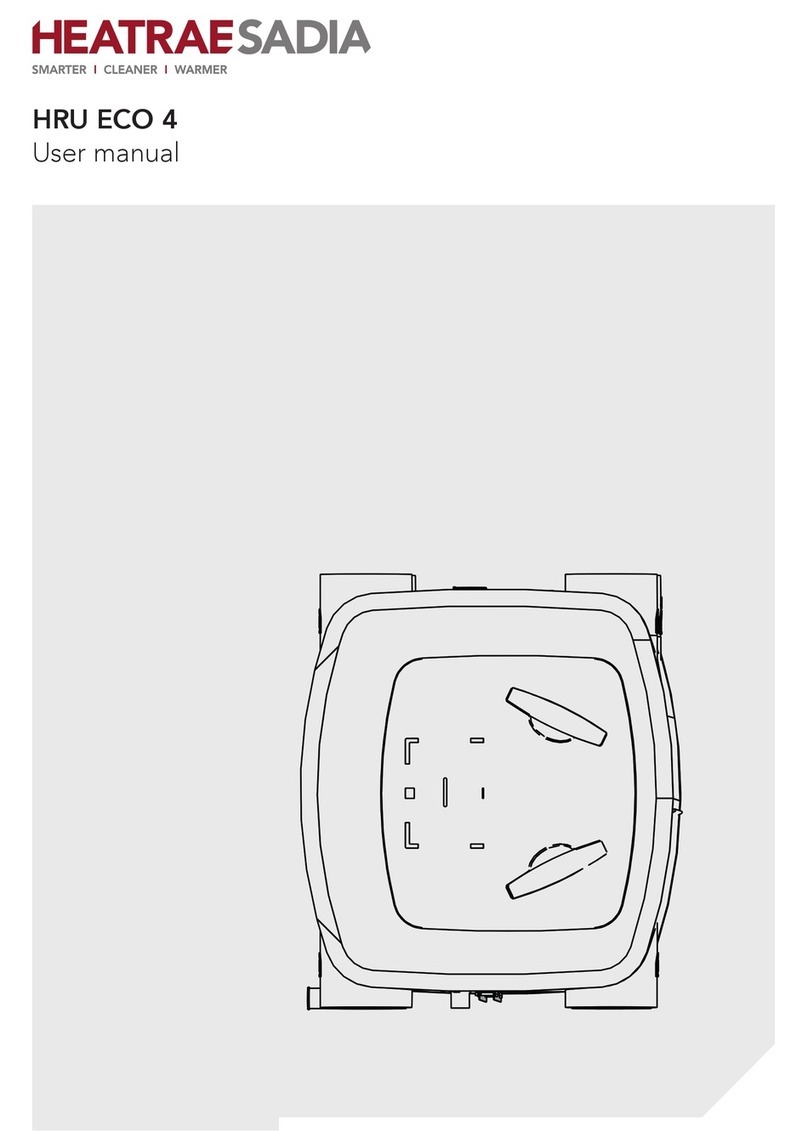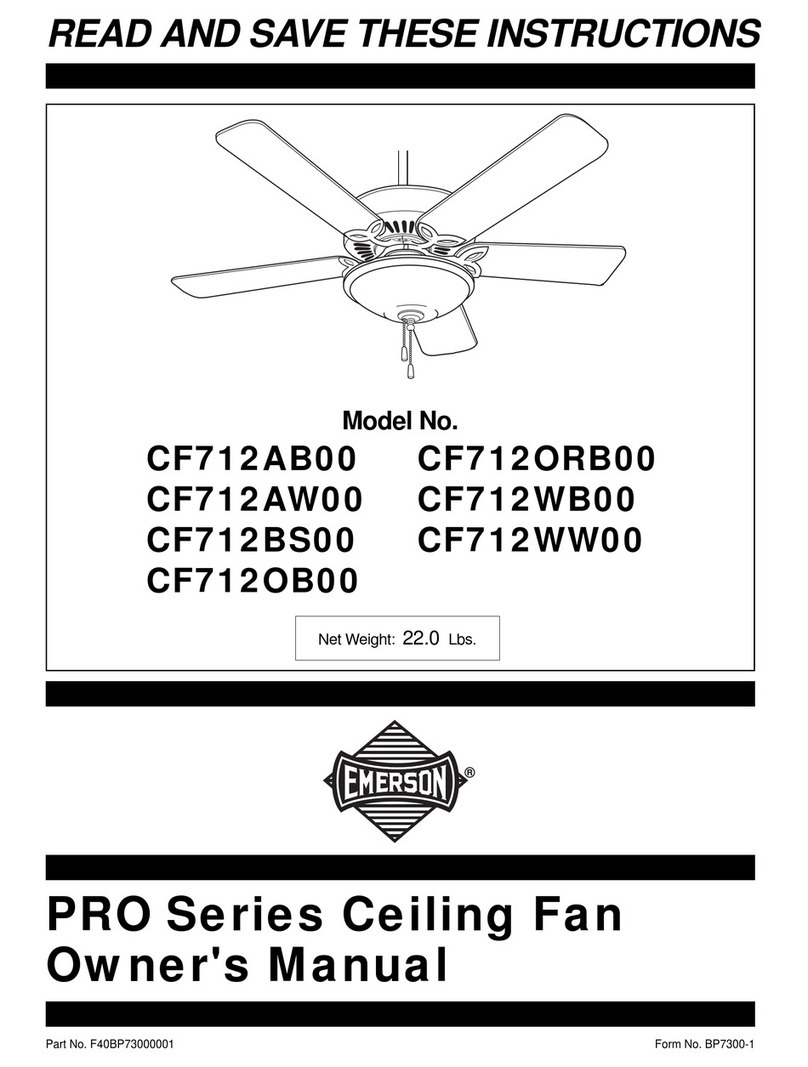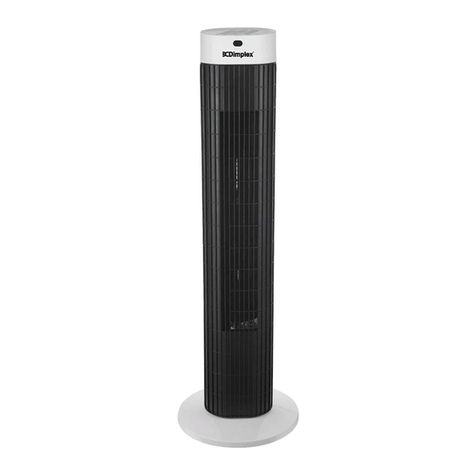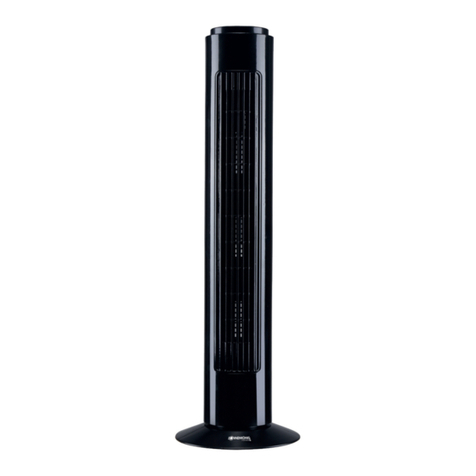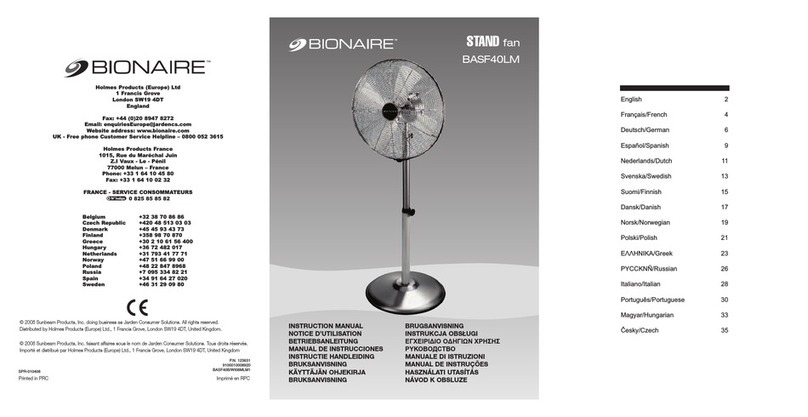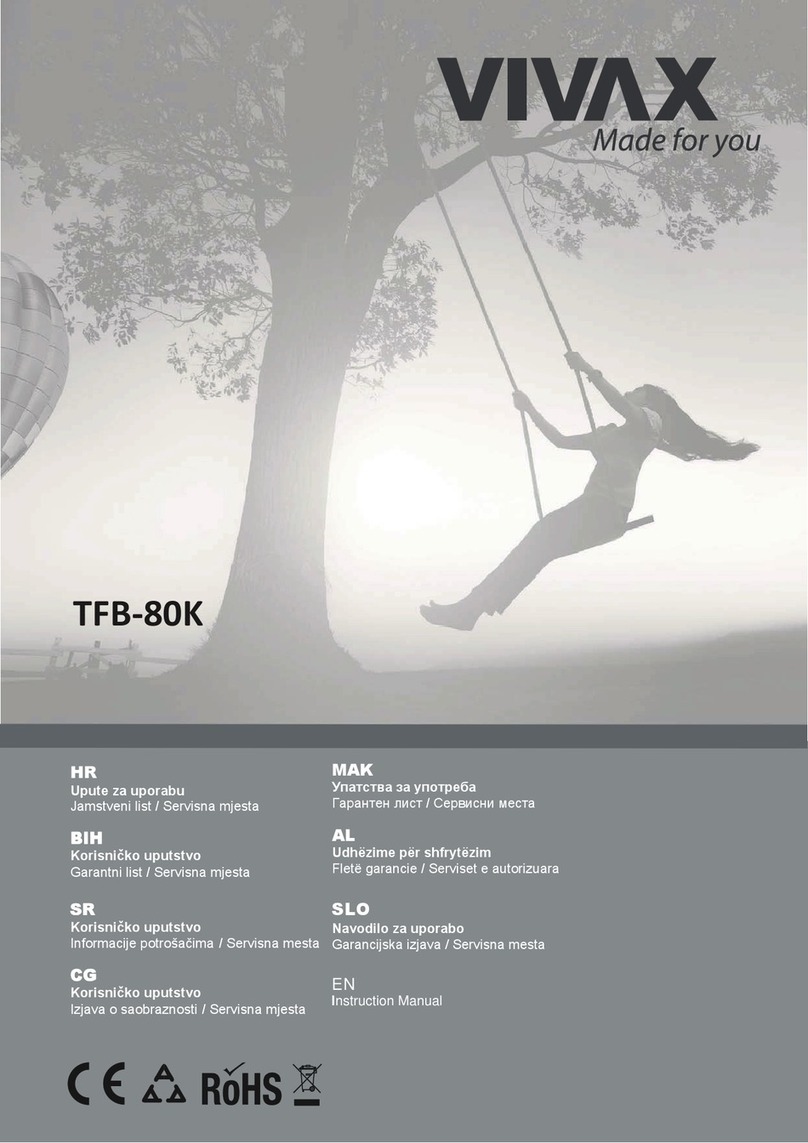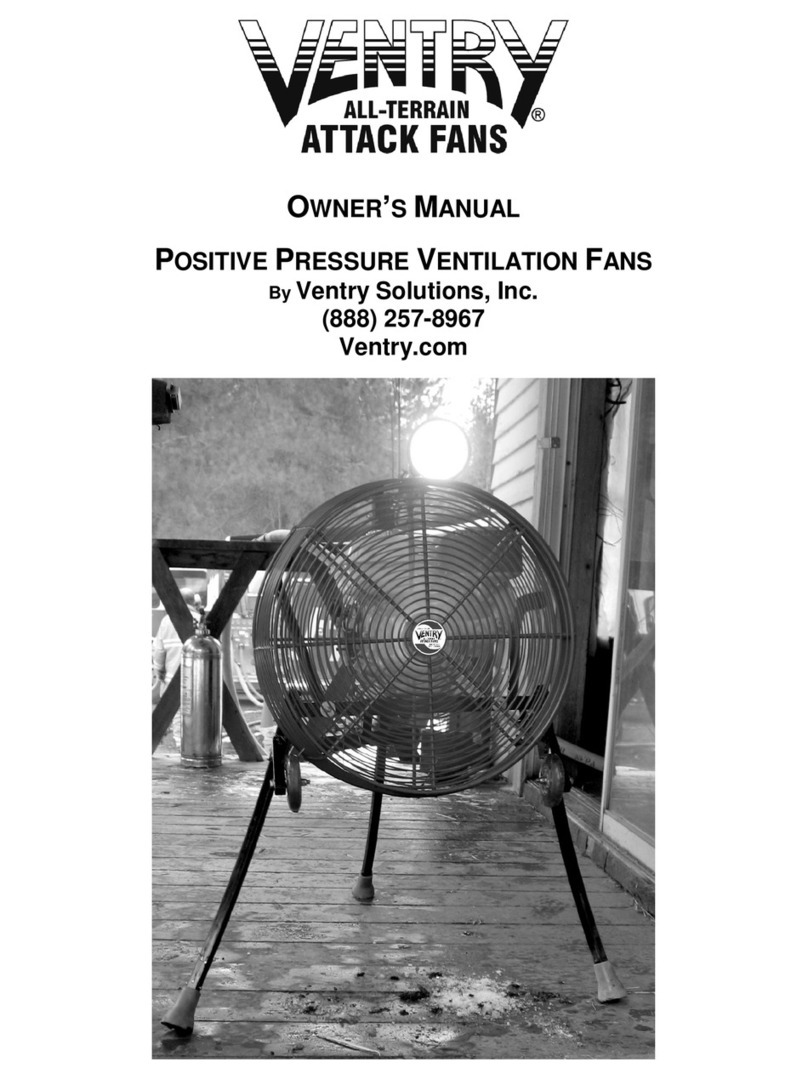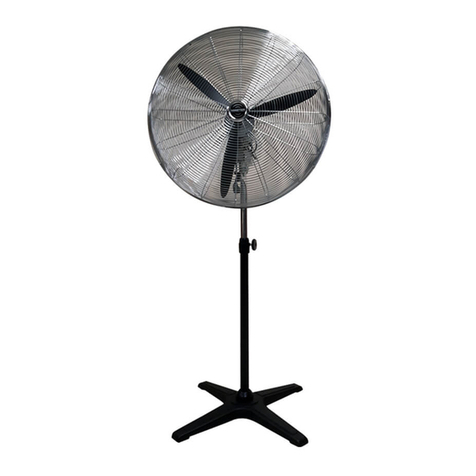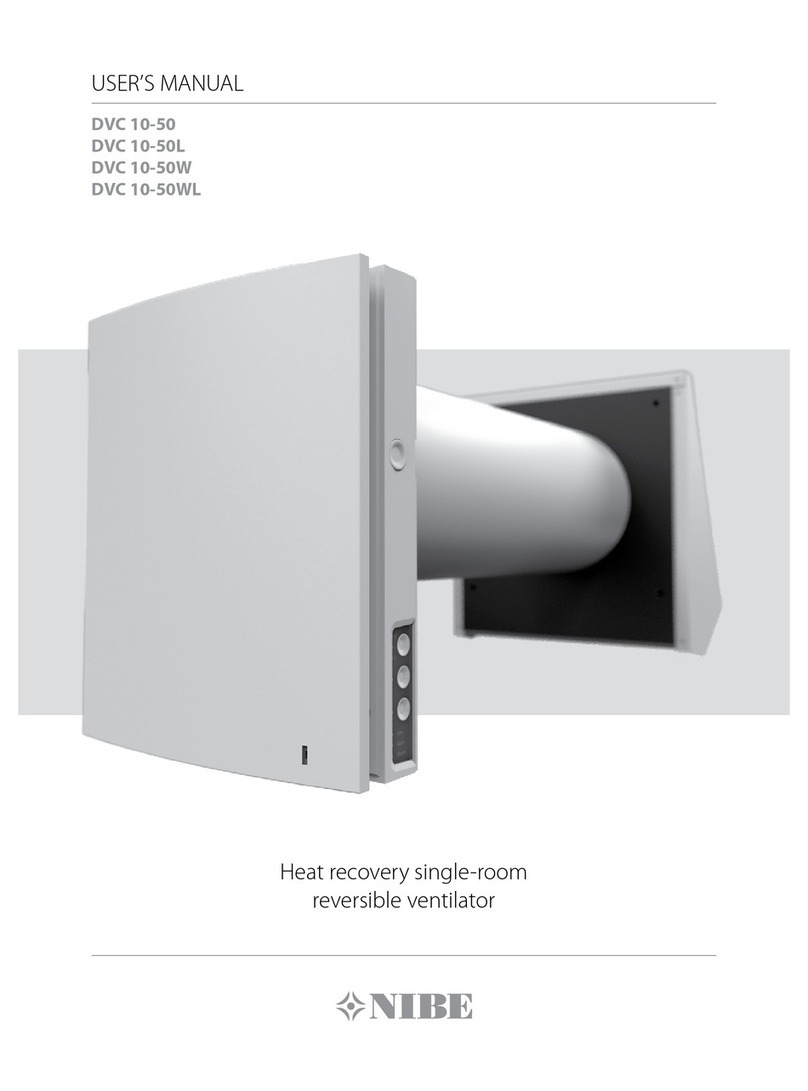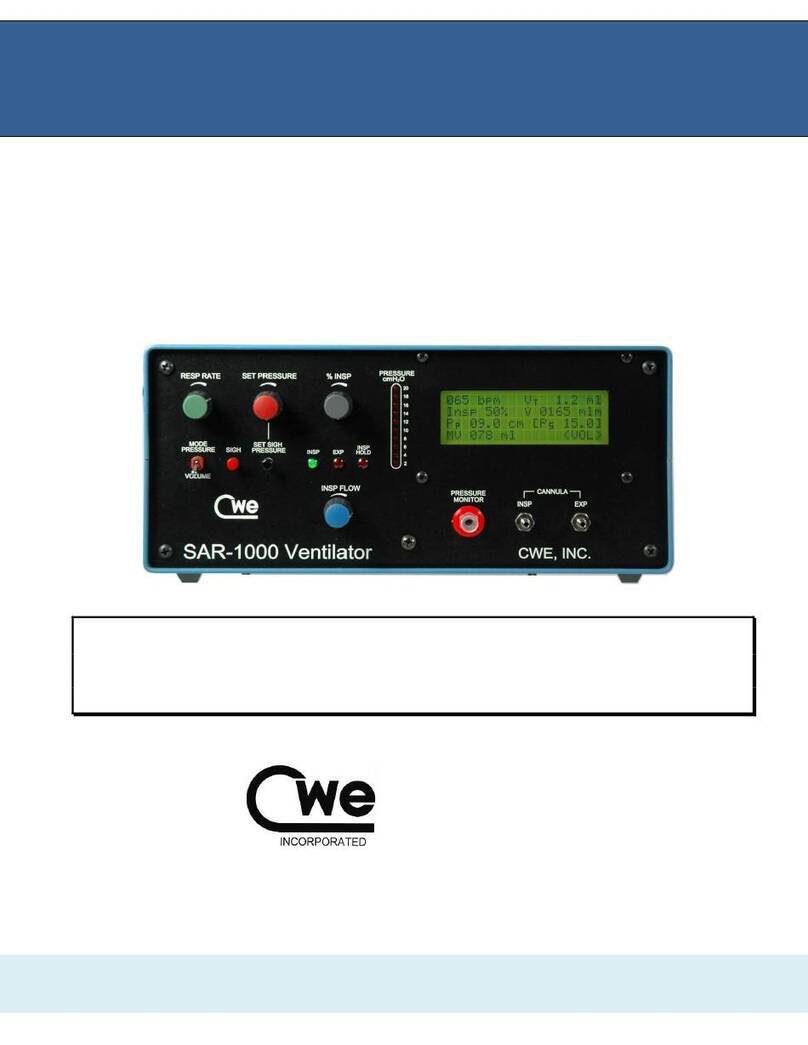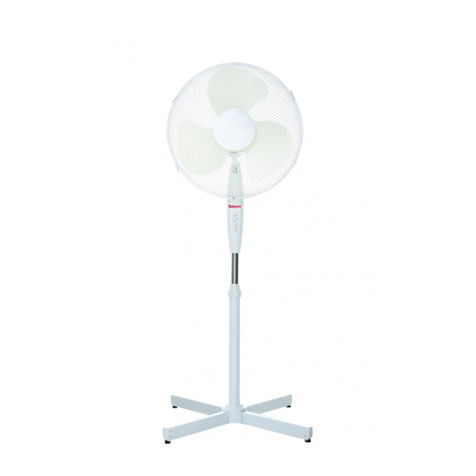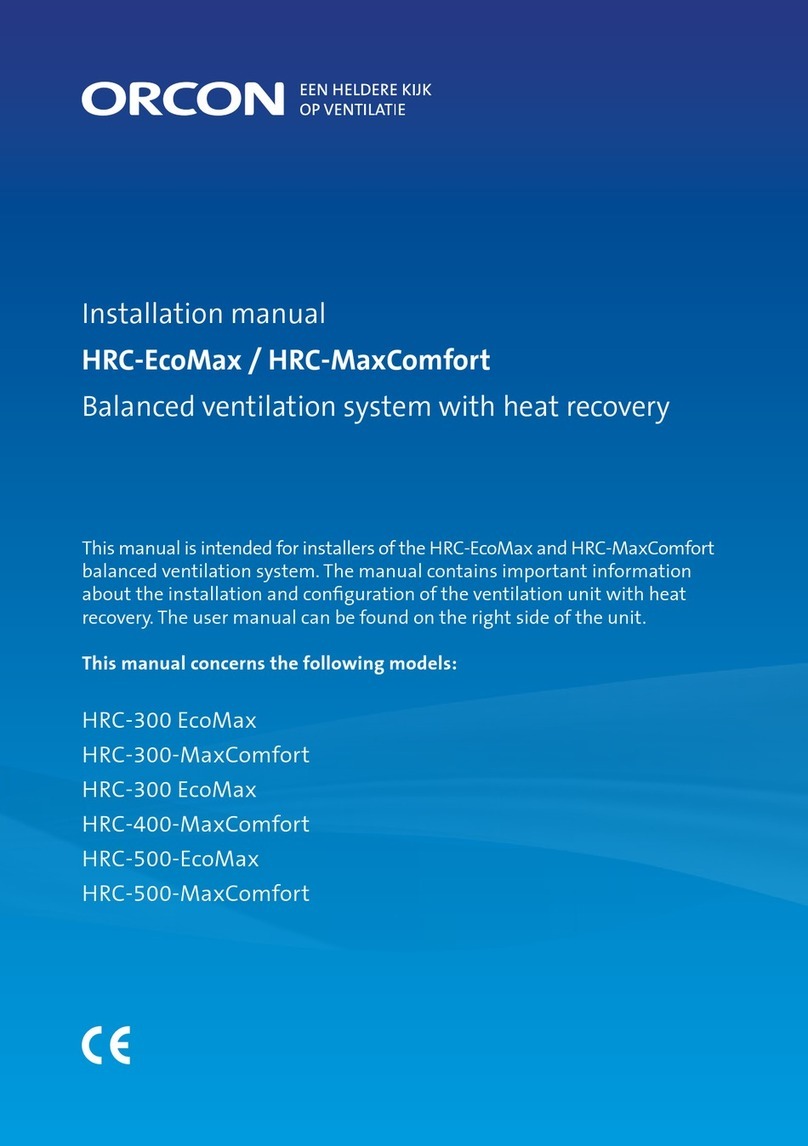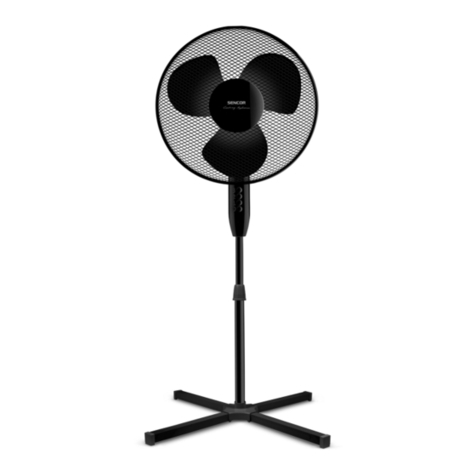Heatrae Sadia HRU ECO 4 User manual

HRU ECO 4
Installation manual

Translation of the original document.

Introduction
This manual is intended for use by the installer of the ventilation
system. It contains important information concerning installation,
use, maintenance and troubleshooting for the ventilation system.
The installer is responsible for installing and commissioning the
unit.
The following definitions are used in this manual to draw attention
to hazards, instructions or indications related to people, products,
installations and/or the surroundings.
ä Warning!
Indicates a hazard that can cause injury and/or severe damage
to the product, system or surrounding area.
ä Caution!
Instructions important for the installation, functioning, operation
or maintenance of the product. Failure to observe these
instructions can result in minor injury and/or severe damage to
the product, system or surrounding area.
Note
Instructions important for the installation, functioning, operation
or maintenance of the product. Failure to observe these
instructions can result in minor damage to the product, system
or surrounding area.
Tip
Instructions that may be important for the installation,
functioning, operation or maintenance of the product, but are
not related to injury or material damage.
Tip
Do not forget to register the product via the Heatrae Sadia
website www.heatraesadia.com.
Although this manual has been drawn up with the utmost care, no
rights may be derived from this document.
Heatrae Sadia reserves the right to modify products and manuals
without prior notice.
Due to our continuous product improvement process, this
document may not match the appliance you received. You can
download the latest version of the manual from
www.heatraesadia.com.
3

Contents
1. Safety and other regulations 5
1.1. Safety 5
1.2. Standards and guidelines 6
2. Product information 7
2.1. Models 7
2.2. Accessories 7
2.3. Technical data 8
2.4. Capacity 9
2.5. Dimension drawings 10
2.6. Parts 11
2.7. Controls 12
3. Installation 15
3.1. Installation requirements 15
3.2. Installing the ventilation unit 15
3.3. Connecting the condensate drain 20
3.4. Connecting the ducts 21
3.5. Electrical connection 22
4. Operation 23
4.1. Ventilation speeds 23
4.2. Devices 23
4.3. Sensors 24
4.4. Pairing and unpairing wireless devices and
sensors
24
5. Commissioning 25
5.1. Preparation 25
5.2. Putting into service 25
5.3. Adjusting the capacity 26
5.4. Setting the supply/exhaust balance 27
6. Inspection and maintenance 28
6.1. Inspection and maintenance schedule 28
6.2. Inspecting, cleaning and replacing filters 29
6.3. Resetting the filter indication 30
6.4. Cleaning the insect filter 30
6.5. Replacing the frost valve motor 30
6.6. Inspecting and cleaning air valves 31
6.7. Inspecting and cleaning the fans 31
6.8. Inspecting/cleaning ducts 33
7. Service parts 34
8. Faults 36
9. Warranty 41
10. Declarations 42
4

1. Safety and other regulations
1.1. Safety
●Work may only be performed on the
ventilation system by qualified installers in
accordance with the regulations
mentioned in this manual. Only original
accessories and parts as specified by the
manufacturer may be used for this
purpose.
●Do not use the product for purposes other
than those for which it is intended, as
described in this manual.
●Be careful when using electrical
appliances:
-Never touch the appliance with wet
hands.
-Never touch the appliance when
barefoot.
●This product and/or system may be
operated safely by children aged 8 years
and older and by people with physical,
sensory or mental disabilities or a lack of
experience/knowledge if under
supervision or after having received
instructions regarding safe use, and if they
are aware of the product and/or system
hazards.
●Cleaning and maintenance by the user
may not be done by children or people
with physical, sensory or mental
disabilities or a lack of experience/
knowledge without supervision.
●Do not allow children to play with the
product and/or system.
●Do not use the product in the vicinity of
flammable or volatile substances such as
alcohol, insecticides, petrol etc.
●The safety instructions must be followed in
order to prevent physical injury and/or
damage to the product.
●The product includes moving parts. Please
therefore wait at least 10 seconds after
disconnection prior to opening or
touching the product as these parts will
continue to move for some time.
●Secure the appliance against being
switched on accidentally.
●Maintenance instructions must be
followed to prevent damage and
excessive wear and tear.
●The product may not be modified.
●The product is only suitable for use with a
230 V, 50 Hz AC power supply system.
●Ensure that the electrical system to which
the product is connected meets the
necessary conditions.
●Do not expose the product to the
elements.
●Do not place any objects on top of the
device.
●Inspect the product regularly for faults. In
the event of faults, switch the product off
and contact your installer or Heatrae Sadia
Customer Service immediately.
●Switch the product off if:
-The product is not working properly.
-You want to clean the outside of the
product.
●Ensure that the electrical circuit does not
become damaged.
●Do not use the device to extract air from
boilers, heating systems etc.
5

●Ensure that the device drains into a sewer
system which leads outside, and is
suitable and installed for this purpose.
●Ensure that air valves and grilles are not
obstructed, and that they are clean.
1.2. Standards and guidelines
ä Warning!
The specifications and settings of the appliance comply
exclusively with the standards and statutes of the country in
which the appliance is sold.
Use outside this country may lead to very dangerous situations.
The installer must ensure that the entire installation complies with
the legal requirements, regulations as referred to in this document
and other applicable documents provided by the manufacturer.
Supplements, amendments and legal requirements and regulations
which come into force later on are deemed to be applicable at the
moment of installation for all legal requirements and regulations.
After installation, no health, safety or environmental risks may be
present in accordance with the applicable CE standards. This also
applies to other products included in the installation.
6

2. Product information
The HRU ECO 4 consists of a central balanced ventilation unit with
heat recovery, an installation kit and a condensate drain port.
2.1. Models
HRU ECO 4 versions
Item Type Description
7030000 HRU ECO 4 Apt Balanced ventilation unit with heat
recovery; RF, Apartment
7030001 HRU ECO 4
House
Balanced ventilation unit with heat
recovery; RF, House
2.2. Accessories
Item no. Type Description
95980003 RFT W Wireless control switch
with three settings and
timer function. (White)
95970204 RFT AUTO Wireless RF control
switch with 2 settings, an
automatic mode and a
timer function.
95970002 Wired
Controller
Wired three-position
switch for installation
95970201 RFT-CO2
230V
RFT CO2 sensor 230 V
95970203 RFT-RV BAT RFT-RV battery-powered
sensor
95970202 RF-PIR BAT RF-PIR battery-powered
presence sensor
7

2.3. Technical data
Description Symbol Unit HRU ECO 4
Apartment House
DIMENSIONS AND WEIGHT
Dimensions [HxWxD] — mm 848 x 730 x 479
Weight — kg 24
CONNECTIONS
Top duct connections — mm 4x Ø 150 inner / Ø 180 outer
Bottom duct connections — mm 2x Ø 150 inner / Ø 180 outer (from/to dwelling)
Condensate drain — mm Ø 40 mm outer
GENERAL
IP classification — — IP31
Safety class Double insulated
Installation class II
Filter class — — Standard G3
RF (built in) — — 30 m in free space, 868 MHz
Supply voltage — — 230 V AC - 50Hz (+/-10%)
Power connection — — Five-wire power cable, stripped
TECHNICAL PARAMETERS
Thermal efficiency of heat recovery ƞt% 94
Electric power input of fan drive at maximum flow rate — W 154
ä Caution!
In case of safety class 1, the appliance must be connected to an
earthed socket outlet.
ä Warning!
Never use an extension cable for connection of the unit.
8

2.4. Capacity
HRU ECO 4 Capacity [m3/h] Pressure [Pa] Power [W]
Level 1 minimum 50 10 8
Level 1 standard 75 20 12
Level 1 maximum 150 40 29
Mode 2 *150 80 38
Level 3 minimum 225 100 74
Level 3 standard 275 100 106
Level 3 maximum 350 100 154
* Level 2 is a calculated value, depending on the set minimum and maximum capacity.
Levels 1 and 3 can be adjusted using the potentiometers on the
control panel.
(see Adjusting the capacity on page 26).
9

2.5. Dimension drawings
424306
233 233
730
480 125
220
123
123
466
477
125
ø 180
ø 150
848
A
A
10

2.6. Parts
1110
2
8
3
1
9
7
4 5 61110
2
8
3
1
9
7
4 5 6
Key
1Ventilation unit
2Rear bayonet ring
3Heat exchanger
4Front panel
5Front door
6Filter
7Motor module
8Connection cover with control board and power cable
9Insect filter
10 Frost valve
11 Bypass valve
11

2.7. Controls
The HRU ECO 4 is normally equipped with a three-level control
which allows the flow rates at low speed and high speed to be
adjusted as desired with potentiometers on the unit. In addition,
the ventilation unit has some automatic controls that operate
continuously in the background.
2.7.1. Heat recovery
Before the stale air is discharged outside, it is filtered and passes
through the heat exchanger. The fresh outside air is also filtered
and passes through the heat exchanger before entering the
dwelling. In the heat exchanger, the two air streams pass alongside
each other but are not mixed together. This allows heat from the
exhaust air to be transferred to the fresh supply air, so this energy is
not lost.
This heat recovery process is very efficient. Up to 97% of the
extracted heat is returned to the dwelling.
Note
Despite the heat exchange process whereby Supply air from
outside is pre-heated, the balanced ventilation system may not
be regarded as a heating system. It is a ventilation system that
contributes to a comfortable and healthy living environment in a
dwelling.
2.7.2. Summer bypass control
The aim of the summer bypass control is the ventilation of the
dwelling with less heat transfer or none whatsoever.
The Heatrae Sadia HRU ECO 4 heat recovery unit is supplied as
standard with a bypass valve which is fully integrated into the unit.
This valve operates fully automatically. The bypass allows the
outdoor air intake to go around the heat exchanger. The exhaust air
always passes through the heat exchanger.
This automatic control will primarily be activated at night in the
summer. The outside air is usually cooler than the warm inside air at
this time.
Note
The summer bypass control is not a cooling device, but it does
ensure that the dwelling remains cool for longer on summer
nights.
2.7.3. Frost control
The aim of the frost control is to prevent the heat exchanger
freezing, which would mean no ventilation could take place.
If the temperature of the supply air in the heat exchanger comes
too close to the freezing point, the appliance will open the frost
valve at the top of the unit in a controlled manner to suck in warm
room air, which is mixed with the cold air sucked in from outside. At
the same time the supply fan starts running faster (the fan speed is
boosted so that the amount of fresh outside air remains the same).
Thanks to this preheating of the cold outside air, the warm air
extracted from the dwelling does not have to warm up the cold
fresh air as much. The automatic control ensures that the
temperature of the supply air in the heat exchanger remains safely
above the freezing point.
If the outside temperature drops even further, the supply fan will
slow down and will ultimately be reduced to a minimum speed.
If the temperature drops even further, the exhaust fan speed will be
increased and the supply fan will continue to run at minimum
speed.
If the outside temperature becomes extremely low, the supply fan
will be switched off but the exhaust fan will continue running. The
frost valve is also closed in this case.
After a defined time, the supply fan will start running again at
minimum speed and the frost valve will be opened again to check
whether the frost risk has gone away.
If the outside temperature rises, the above procedure is followed in
the reverse order until the frost risk is gone. The resident always
determines the exhaust air volume.
12

2.7.4. Filters
The HRU ECO 4 has two filters, one for each air stream. Both filters
are positioned in the ventilation unit so that they protect the
exchanger against soiling. In addition, the filter in the air supply
channel protects the user against dust and other impurities found in
the air drawn in from outside.
There are various types of filters:
●G3 filter.
This filter is supplied with the appliance as standard and it is
very suitable as a 'construction dust filter' in the initial period
following completion of the new housing. After around three
months, the filter should be replaced with a G4 or F7 filter.
●G4 filter.
This coarse filter is mainly used to filter relatively large dust
particles from the air. This protects the heat exchanger in
particular against incoming dirt.
●F7 filter.
This fine filter stops fine dust particles as well as coarser dust
particles (fine dust, pollen). This is particularly beneficial for
people with allergies who are sensitive to this.
During the product's lifetime the filters will become dirty, which
reduces the capacity of the ventilation unit. It is therefore essential
that the filters are cleaned as indicated and ultimately replaced.
ä Warning!
HRU ECO 4 should always be fitted with the appropriate filters.
Without filters, the appliance can be irreparably damaged.
2.7.4.1. Filter warning
The controller of the ventilation unit uses a counter to keep track of
when the filters need to be cleaned or replaced. If it detects that a
filter is dirty, an LED (4) on the ventilation unit starts blinking
orange.
1
2
3
4
5 6
AWW
ON ON
VKK
COM
Key
1Balance supply setting
2Potentiometer for high speed setting
3Potentiometer for low speed setting
4Status LED / Dirty filter indication
5Communication port
6DIP switch settings (VKK & AWW)
Note
It is advisable to check the LED on the ventilation unit on a
regular basis.
ä Caution!
If a dirty filter is detected, a signal is also sent to the resident by
suddenly reversing the operation of the control: when the Low
Speed button on the remote device is pressed, the ventilation
unit starts running at high speed, and when the High Speed
button is pressed the ventilation unit starts running at low
speed. When this happens, check the LED on the ventilation
unit. If it is blinking orange, the filter needs to be cleaned or
replaced.
13

2.7.4.2. Status LED
The appliance is equipped with a status LED on the control panel.
The status LED can display the following messages:
Pattern Function
Green Orange
Blinks 1x/s Blinks 1x/s Identification
Blinks 1x/s Pairing mode
Lit 6 s Blinks 1x/s Frost mode
Lit 5 s Blinks 2x/s Bypass mode
Lit Normal operation
Pattern Function
Red Orange
Blinks 1x/s Blinks 1x/s Exhaust fan fault
Blinks 1x/s Blinks 2x/s Supply fan fault
Blinks 2x/s Blinks 2x/s Exhaust temperature
sensor fault
Blinks 2x/s Blinks 3x/s Supply temperature
sensor fault
Blinks 3x/s Blinks 1x/s Sensor fault
Blinks 1x/s Filter dirty
14

3. Installation
3.1. Installation requirements
Take the following into account when positioning the system:
●Install the ventilation unit:
- in a closed installation (where the system can cause as little
sound nuisance as possible);
- in a frost-free area;
- in the vicinity of a 230 V AC 50 Hz connecting box; the
length of the power cable is 1.5 m;
- in the vicinity of a trap with a sewer connection (for
connecting the condensate drain);
- so that it remains accessible for service and maintenance;
- on a wall with sufficient load-bearing capacity (min.
200 kg/m2).
●The duct systems and the exhaust and supply points must be
correctly dimensioned.
●The correct fixing materials must be present.
ä Caution!
In order to prevent condensation, the duct from outside and the
duct leading outside must be thermally insulated and vapour-
tight right up to the ventilation unit.
Tip
To avoid noise complaints, Heatrae Sadia advises fitting
silencers at the connections of the two ducts coming from the
dwelling.
Tip
When positioning the ventilation unit, ensure that enough space
is kept free for servicing the system. A minimum of 500 mm
clearance at the front of the ventilation unit is necessary for this
purpose.
3.2. Installing the ventilation unit
3.2.1. Unpacking and checking
a) Carefully remove the appliance from the box.
b) Check that the nameplate information and the type correspond
to the sticker on the outside of the box.
c) Check the appliance for damage and completeness.
d) Check that the installation and/or and user manual(s) and the
required accessories (condensate drain port, installation kit,
etc.) are included with the ventilation unit.
e) Place the ventilation unit upright on the ground.
3.2.2. Mounting positions
ä Caution!
Mount the ventilation unit on a concrete surface, not on a
wooden or plaster surface or a surface with insufficient load-
bearing capacity (<200 kg/m2), since that may lead to excessive
noise.
ä Caution!
Always ensure that the ventilation unit is installed with the ducts
connected to the correct air inlets and outlets.
The ventilation unit is mounted on the wall.
Depending on the duct installation, the ventilation unit can be
wall mounted with the standard configuration (as delivered in the
package) or the inverse configuration (see Converting for inverse
mounting on page 17).
The symbols on the side of the ventilation unit indicate where the
ducts from the dwelling should be connected.
15

Mounting positions
Standard high-rise Inverse high-rise (1)
D
AC
D
B
ED
AC
D
B
E
B
D
D
A
C
E
B
D
D
A
C
E
Standard low-rise Inverse low-rise (1)
D
AC
D
E
BD
AC
D
E
B
E
D
D
A
C
B
E
D
D
A
C
B
1) See Converting before mounting.
Key
AExhaust air to outside CSupply air from outside
BSupply air to dwelling DExhaust air from dwelling
EClosed
16

3.2.3. Converting for inverse mounting
The HRU ECO 4 heat recovery unit is supplied as standard with the
motor module on the left side. If it fits better with the duct systems,
the ventilation unit layout can be inverted easily without any tools
before it is mounted on the wall. If that is not necessary, this section
can be skipped.
a) Remove both filter holders.
b) Turn the front door with the bayonet fitting 90 degrees to the
left (anti-clockwise) and remove the front door.
2
1
2
1
c) On the rear, turn the bayonet ring 90 degrees to the left (anti-
clockwise) and remove it.
2
1
2
1
d) Move the front panel upright (without rotating it) to the other
side and fit the front panel by pressing the edge under the
black edge of the housing.
This is most easily done with the ventilation unit resting on the
ground.
17

e) Place the front door on the new front side as illustrated. Turn
the front door 90 degrees to the right (clockwise) so it is nicely
vertical.
Ensure that the circular foam gasket is present in the gap
between the door and the heat exchanger.
1
2
1
2
f) Fit the bayonet ring on the new rear side as illustrated. Turn the
bayonet ring 90 degrees to the right (clockwise) to secure it.
Ensure that the circular foam gasket is present in the gap
between the bayonet ring and the heat exchanger.
1
2
1
2
g) Fit both filter holders.
The inverted ventilation unit is now ready for mounting.
18

3.2.4. Wall mounting
a) Determine the exact location of the unit, taking the installation
requirements into account.
30
168600
848
80
30
180
210
300
480
30
30
210
420
5xø5mm
Standard mounting.
168600
848
80
30
30
180
210
300
480
30
30
210
420
5xø5mm
Inverse mounting.
The edge of the installation kit corresponds to the centre line of the
ducts. The notch in the bottom edge of the installation kit indicates the
position of the condensate drain (to the left with a standard unit, to the
right with an inverse unit).
b) Fix the wall plate horizontally on the wall with five bolts
(mounting hardware not included).
c) Hook the mounting bracket over the wall plate to hang the
ventilation unit on the wall. The mounting bracket is already
fitted on the appliance. Ensure that the ventilation unit is
resting on the supports at the bottom of the wall plate.
The side edges of the wall plate correspond to the centre lines of the
duct ports.
19

3.3. Connecting the condensate drain
ä Caution!
If the ventilation unit is situated outside the thermal shell of the
dwelling (for example in a non-insulated attic), the condensate
drain must be thermally insulated up to the ventilation unit.
During winter, moisture in the exhaust air from the dwelling may
condense in the heat exchanger. The ventilation unit has an
integrated condensate drain for this.
ä Caution!
Ensure that the condensate hose is mounted with a downward
slope toward the drain.
ä Caution!
The condensate hose should not have any sharp kinks in it.
ä Caution!
A suitable trap (horizontal or vertical) must be fitted to enable
sloped connection of the condensate hose to the condensate
drain. For use with a vertical trap, the unit must be raised
sufficiently with timbers.
a) Fit the condensate drain port (not included) on the condensate
drain nozzle of the ventilation unit.
b) Connect a condensate hose (minimum 20 mm inner diameter)
to the condensate drain port.
c) Route the condensate hose to a water trap with a water level of
least 50 mm. Insert the hose far enough into the trap.
> 50 mm
30 mm
d) Fill the trap with water.
ä Warning!
Ensure that the condensate hose is always inserted well below
the water level in the trap (at 30 mm). Otherwise leaks will occur.
ä Warning!
Always mount the appliance on the wall, never standing or lying
on the floor.
20
Other manuals for HRU ECO 4
3
Table of contents
Other Heatrae Sadia Fan manuals

